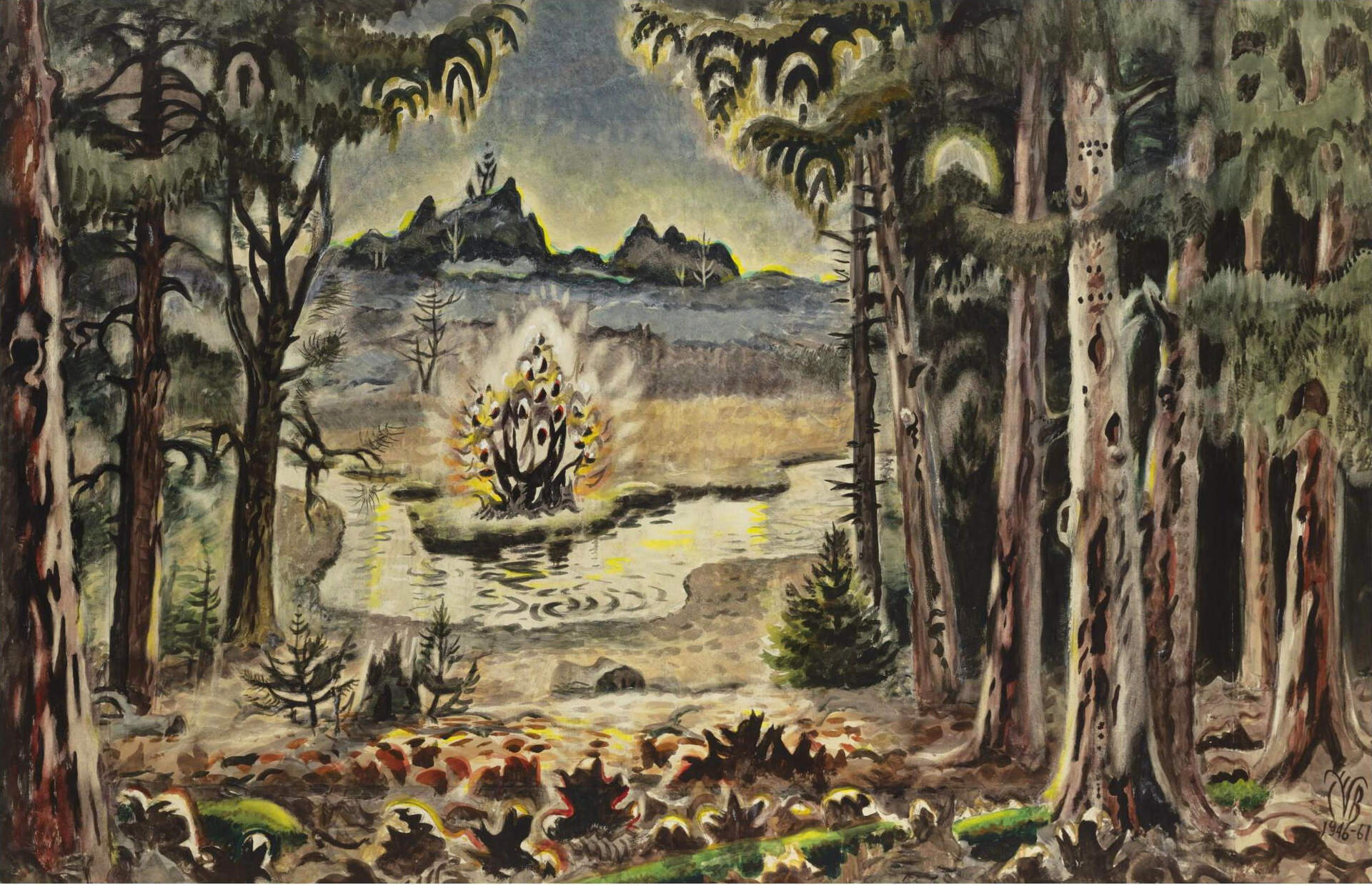
Charles E. Burchfield (1893-1967), Dawn in Hemlock Woods, 1946-61; watercolor on paper, 39 x 60 inches; Crystal Bridges Museum of American Art, Bentonville, Arkansas
Charles E. Burchfield, Journals March 4, 1946
Wednesday, Mar 4, 2020
To the Elma Nurseries Country, impelled by the fine spring like morning. The reflections of the sun in the water was of a pale gold tint, which comes only at certain times in the early Spring. At its rising it had a hazy, rich carmine cast which foretold rain to come. A soft-moist wind from the South-west.
My mind was full of yesterday’s Sibelius Symphony and that coupled with my long absence from the country, made everything full of wonder and significance.
I parked by the Buffalo Creek on Town Line Road, and made little excursions in various directions, along the creek, in the woods, and up to Bullis Road and then back to the cliff that skirts the creek on its southern edge. I made many notes of pictures I want to make. Tiny black spiders,(uniform in size) in the dry grass.
Once I saw too [sic] large birds flying west, duck-like, but almost large enough to have been swans. Crows were abundant, and a few chickadees & one nuthatch, but that was all; no Spring buds yet.
About midafternoon light rain commences to fall.
I drove to the Jamison Road Swamp, and made an excursion to the woods to the north. But my mind was dulled, and I saw little. A bouquet of cottonwood buds from a wind-fallen tree.
Nevertheless I came home full of memory of a day spent with wild primitive nature, and my mind on fire with projected pictures. I wished I were not going to N.Y. tomorrow.
Dominating all impressions was that of the creek. A stream in early spring assumes a power and significance it never attains at any other season, (unless perhaps an untimely flood in summer)- Swollen by melting snow, and heavy spring rains, it becomes masculine and head long, sweeping everything aside with its force, undermining tress that have grown too close to its edge, and eating whole fields away.
I think it was the savage gnawing of the creek at the bank that most suggested the sinister power of the Sibelius Symphony.
At a point where the high abuttment [sic] of blue & yellow clay forced the stream to make a sharp (almost right angled) turn. I stood on a low sand bar and watch the swirling water. I felt, rather than actually saw that the water was rising - it had it in the power of growing. The first sign was the sudden lifting a sweeping away of a large mass of ice cakes that had been held by some half-submerged roots - I then began to look for more evidence; a tiny bay of water, in a slight depression between the sand bar on which I was standing and the mainland, was slowly but surely extending inland. A loose branch from a log, straddling the stream that had been bobbing up and down with an almost hilarious gurgling sound, gradually was being submerged and silenced.
It was exactly that sort of day when as a boy, I would find blue clay at the end of Farquhar’s or “kidney ore” stones on Union St. by Brooks.
Charles E. Burchfield, March 4, 1946